As the editor of Guitar World magazine during its formative years from 1980 to ’89, I spent a lot of my professional hours that were not consumed by backstage passes and tattooed lasses presiding over disputes about who was the fastest, the most soulful, most riff-inducing or shreddingest axeman on the planet. Everyone had his guitar hero, and my guitar hero could kick your guitar hero’s ass in his sleep. This, thankfully, is not that list.
Then there were the pages-long soulful discussions – mostly in the voluminous “Sounding Board” letters to the frickin’ editor column – about the minutiae of detail that distinguished, say, a genuine 1953 Fender Telecaster (identified with Keith Richards and Roy Buchanan) from a similar-vintage Fender Esquire (famously linked to Jeff Beck), which on the face of it was the same guitar. But when you got out your Phillips screwdriver and pried off the backplate or the pickup-cover or some other element under the instrument’s hood, and examined the number and type of screws, bolts or pickup bobbins, many wondrous and soul-stirring archaeological details would be revealed. This is not that list, either, but I will make it interesting for you.
I have had this kind of discussion with some of the musicians I’ve interviewed over the years – Jimmy Page, Jeff Beck, Stevie Ray Vaughan, Billy Gibbons, Geddy Lee and Keith Richards among them – and by and large they are aware of the hardware aspects of their craft but not thrilled to talk about it. Page put it this way, when he did talk about the merits of the Gene Parsons/Clarence White Stringbender, a device which Byrds guitarist Parsons installed on Page’s brown Telecaster so that he could incorporate the glissando effect of a pedal-steel guitar into his repertoire: “I suppose it’s just like a tremolo arm for all the guys that play a Strat. Of course it is. It’s a gadget but you work with it accordingly. I’m just bending the second string – it’s a certain thing you can do within that mechanism that you can’t do with an ordinary guitar.” But as to talking to guitar magazines about this stuff, Pagey would on the whole rather be at the dentist’s having a root canal.
Keith Richards is equally loath to discuss guitar minutiae. As he told Esquire, when talking to guitar mags about his main instrument, a 1953 Fender Telecaster called “Micawber” (#3 on this listicle, btw), the technical details of the hardware are beyond him, but he knows what sounds good. “I’ve got my favorite axes that I know quite a bit about but when they start to go, ‘Is that the Gibson S3?’ I don’t f**king know. It works all right for me.”
All of which is to say that this list is about the ultimate pairing of a guitar hero with his (or her) six-string soulmate (or sometimes 12-string and even four or five) and the backstory of how their musical match was made in heaven. Oh, and since there is often a dispute or controversy about a given guitar’s place in rock ’n’ roll history, I have also provided a convenient side trip you can meander into called “Also identified with.…”
Here’s the first seven of the 14, not exactly rated numerically though somewhat in order of importance. These are, after all, all very special axes.
7) George Harrison’s Rickenbacker 12-String
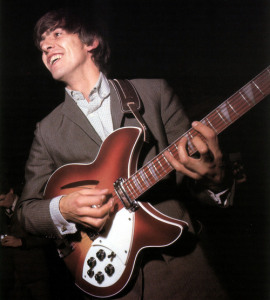 The Rickenbacker 360/12, a semi-hollow body electric guitar, was among the first electric 12-string guitars. Visually similar to the Rickenbacker 325 six-string Harrison’s bandmate John Lennon played, the guitar was made famous by George’s use of it on many Beatles recordings, introducing the distinctive new sound of this guitar on “I Call Your Name” in March 1964.
The Rickenbacker 360/12, a semi-hollow body electric guitar, was among the first electric 12-string guitars. Visually similar to the Rickenbacker 325 six-string Harrison’s bandmate John Lennon played, the guitar was made famous by George’s use of it on many Beatles recordings, introducing the distinctive new sound of this guitar on “I Call Your Name” in March 1964.
Harrison loved the 360/12, and while he moved on to other guitars as his “main” instrument, he retained his affection for the instrument, once calling it “the only 12-string you can change a string on when you’re drunk.” What he loved about it was the quintessential jangle-axe qualities of the Rick. Had it not been for a flu-ridden Harrison stuck in his hotel room in 1964 with a shiny new guitar to cheer him up, groups such as The Byrds, Tom Petty & the Heartbreakers, R.E.M. and The Smiths might never have come into being.
The meeting of man and axe took place at an auspicious time for both the Beatles and the brand – Rickenbacker, a smallish instrument maker by American standards, which nevertheless gave the first of its prototypes to Suzy Arden, a Las Vegas country music entertainer.
It is the second of these prototypes with which we are concerned, showing in a special display at the Savoy Hilton hotel in New York City in 1964, a showcase for The Beatles, who were in town to play on The Ed Sullivan Show. George Harrison ended up with the 12-string prototype, and he used the instrument in A Hard Day’s Night, which was watched by a lot of people, which in turn led to high demand for Rickenbacker’s twelve-string.
Also identified with…
Roger McGuinn’s Mapleglow Rickenbacker 360 12-String
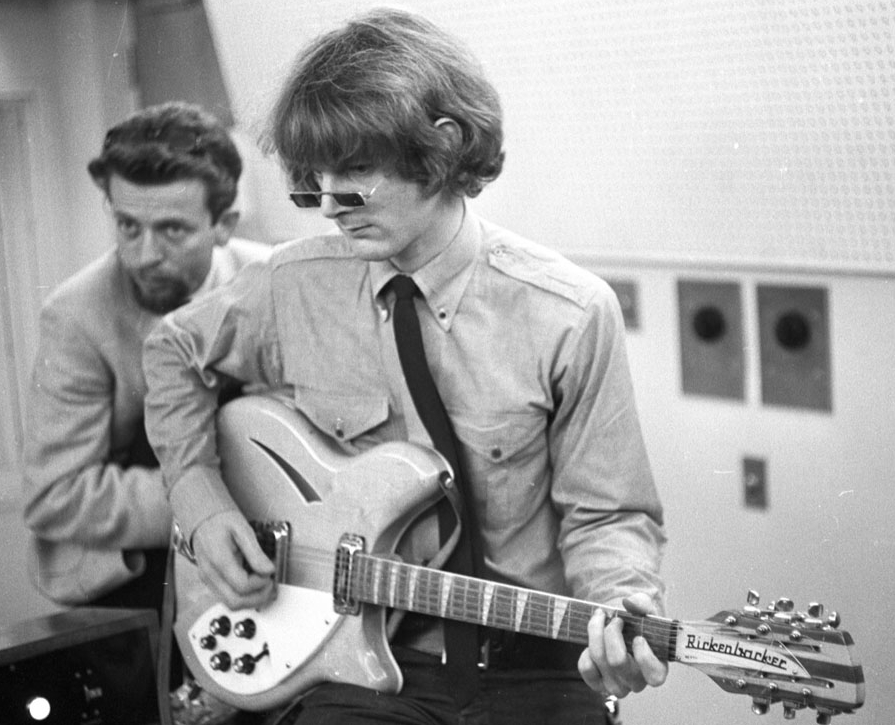 The segué from George Harrison to the Byrds is easy. In 1963, Bobby Darin hired Roger McGuinn as a songwriter for $35 a week at his T.M. Music in New York City’s Brill Building just one year before he co-founded The Byrds. At about that time, McGuinn was taking notice of The Beatles, whose first American tour would commence in February 1964, and wondering how Beatlemania might affect folk music. By the time he made it to the Troubadour in Los Angeles, he had included Beatles songs in his act, giving rock-style treatments to traditional folk tunes. and thereby caught the attention of another folkie Beatles fan, Gene Clark, who joined forces with McGuinn in July 1964. Together they formed the beginning of what was to become The Byrds.
The segué from George Harrison to the Byrds is easy. In 1963, Bobby Darin hired Roger McGuinn as a songwriter for $35 a week at his T.M. Music in New York City’s Brill Building just one year before he co-founded The Byrds. At about that time, McGuinn was taking notice of The Beatles, whose first American tour would commence in February 1964, and wondering how Beatlemania might affect folk music. By the time he made it to the Troubadour in Los Angeles, he had included Beatles songs in his act, giving rock-style treatments to traditional folk tunes. and thereby caught the attention of another folkie Beatles fan, Gene Clark, who joined forces with McGuinn in July 1964. Together they formed the beginning of what was to become The Byrds.
He couldn’t have gone to the next step without the “Rick.”
While recording the Byrds’ first single, “Mr. Tambourine Man,” at Columbia Studios, McGuinn discovered an important component of his style. “The Rick by itself is kind of thuddy,” he notes. “It doesn’t ring. But if you add a compressor, you get that long sustain. To be honest, I found this by accident. With compression, I found I could hold a note for three or four seconds, and sound more like a wind instrument. Later, this led me to emulate John Coltrane’s saxophone on ‘Eight Miles High.’ Without compression, I couldn’t have sustained the riff’s first note.”
“I practiced eight hours a day on that ‘Rick,'” McGuinn said, “I really worked it. In those days, acoustic 12-strings had wide necks and thick strings that were spaced pretty far apart, so they were hard to play. But the Rick’s slim neck and low action let me explore jazz and blues scales up and down the fretboard, and incorporate more hammer-ons and pull-offs into my solos.”
McGuinn’s first Rickenbacker was a second-generation natural-finished “Mapleglow” 360/12. “Mr Tambourine Man” and “Turn! Turn! Turn!” are synonymous with the era and, interestingly, The Beatles had been listening closely to McGuinn and Co., returning the favor with ‘If I Needed Someone’ on the Rubber Soul album, which Harrison admitted was based on the Byrds’ version of “The Bells Of Rhymney.”
Other notable players of the Rickenbacker 12-string:
• Tony Hicks of the Hollies
• Tom Petty
• Mike Campbell of Tom Petty and the Heartbreakers
• Carl Wilson of The Beach Boys
• Brian Jones of the Rolling Stones
• Mike Rutherford of Genesis
• Pete Townshend of The Who
6) B.B. King’s ‘Lucille’ Gibson ES-355
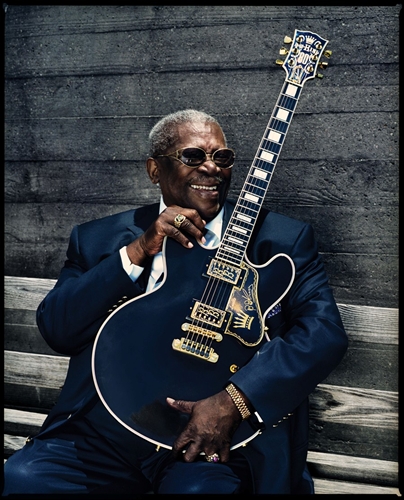 In 1980 Gibson began manufacturing the B.B. King signature “Lucille” model, a variation on the company’s combination hollow- and solid-body ES-355. But it was long before that the original “Lucille” got her name. After rescuing his $30 Gibson L-30 from a burning Arkansas dance hall in 1949, B.B. King learned that the fire was started by two men fighting over a woman named Lucille. He has used the name for each of his guitars since, and while they were all Gibsons, not all of his Lucilles were the ES-355 model with which B.B. is most often identified. The Gibson website points out that “As King’s career flourished, he got a fancier guitar. Launched in 1949, the ES-5 was then one of Gibson’s flashiest and sonically most versatile models – it had three P-90 pickups and came in blonde and sunburst, but B.B.’s was a blonde, with a trio of volume pots and a black pickguard. The ES-5 was discontinued in 1960.”
In 1980 Gibson began manufacturing the B.B. King signature “Lucille” model, a variation on the company’s combination hollow- and solid-body ES-355. But it was long before that the original “Lucille” got her name. After rescuing his $30 Gibson L-30 from a burning Arkansas dance hall in 1949, B.B. King learned that the fire was started by two men fighting over a woman named Lucille. He has used the name for each of his guitars since, and while they were all Gibsons, not all of his Lucilles were the ES-355 model with which B.B. is most often identified. The Gibson website points out that “As King’s career flourished, he got a fancier guitar. Launched in 1949, the ES-5 was then one of Gibson’s flashiest and sonically most versatile models – it had three P-90 pickups and came in blonde and sunburst, but B.B.’s was a blonde, with a trio of volume pots and a black pickguard. The ES-5 was discontinued in 1960.”
Then came other Lucilles, including the ES-125, the ES-175 (also associated with Ted Nugent), even a Gibson Byrdland was Lucille-ized. King has played ES-335s and ES-345s too, but the ES-355 was the one.
By the time he became an international superstar, Gibson and King collaborated to create his own, exclusive Lucille model. And this one had to be fit for a King. As well as personalized pearl inlays, B.B. requested that Gibson remove the F-holes, to reduce feedback. In earlier years, King would often stuff his regular ES-355’s F-holes with cloth to inhibit feedback, so this was a much-needed modification for the bluesman.
The ultimate and most ornate Lucille can be heard on this superb performance of “Everyday I Have the Blues”:
The original Lucille can be heard on vinyl on the raw, energetic concert LPs Live at the Regal (1965) – recorded before a lively crowd at a longstanding black Chicago nightspot, and the perfect match between performer and audience, fire and enthusiasm – and Live at Cook County Jail (1971) , both classics of the genre.
5) Johnny Winter’s Gibson Firebird
![johnnywfirebird[2]](https://bestclassicbands.com/wp-content/uploads/2015/10/johnnywfirebird2.jpg) Firebirds are not for everyone. They play and sound different than any other guitar made. That is what makes them special, and why, in the hands of a talented musician like Johnny Winter, the Firebird and the rockin’ blues is a concept that can’t be beat. The guitar’s unique “mini-humbucker” pickup is a sound unto itself. Anyone doubting the ability of this ax to deliver the blues ought to catch a youtube performance of Johnny Winter sliding his way through “Highway 61.″ It will drop your jaw. The grit of guitar, gutsy and raw when overdriven; tight and clear played clean. It’s a true classic.
Firebirds are not for everyone. They play and sound different than any other guitar made. That is what makes them special, and why, in the hands of a talented musician like Johnny Winter, the Firebird and the rockin’ blues is a concept that can’t be beat. The guitar’s unique “mini-humbucker” pickup is a sound unto itself. Anyone doubting the ability of this ax to deliver the blues ought to catch a youtube performance of Johnny Winter sliding his way through “Highway 61.″ It will drop your jaw. The grit of guitar, gutsy and raw when overdriven; tight and clear played clean. It’s a true classic.
Also identified with…
Elliot Easton Gibson Firebird (reversed)
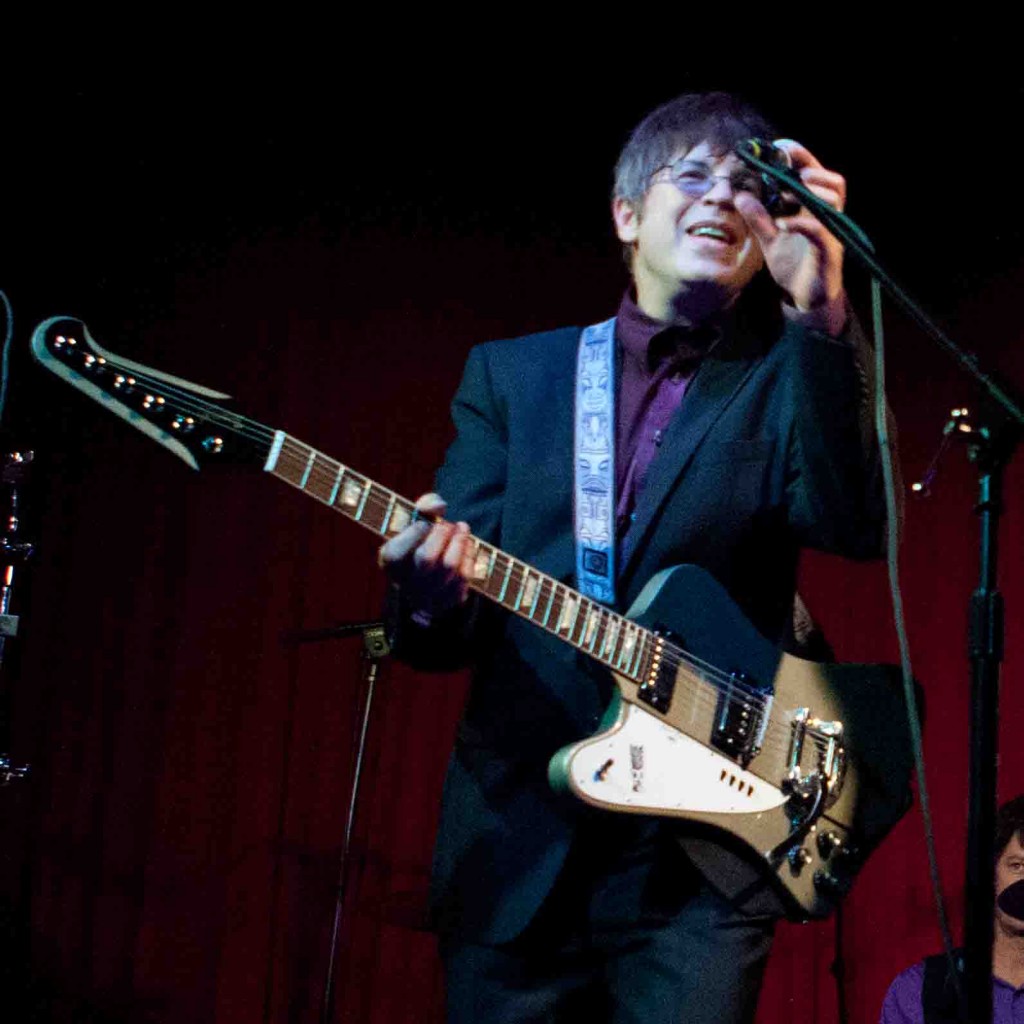 In the video below, former Cars guitarist shows off the production model of his Firebird, with an emphasis of the fancy tools imbedded in his twangy podner in a vintage Gibson “automotive color.” Definitely a guitar that was designed by an automotive designer. “I specified a cool custom Firebird color from the Sixties called Gold Poly Mist. The last personal touch was a little Tiki instead of the Firebird stamp on the pickguard.
In the video below, former Cars guitarist shows off the production model of his Firebird, with an emphasis of the fancy tools imbedded in his twangy podner in a vintage Gibson “automotive color.” Definitely a guitar that was designed by an automotive designer. “I specified a cool custom Firebird color from the Sixties called Gold Poly Mist. The last personal touch was a little Tiki instead of the Firebird stamp on the pickguard.
“My relationship with Gibson goes back to 1979 when I had a Signature SG from the Gibson Custom Shop,” Easton told Guitar World. “This time around, I worked with Gibson USA to do a signature model that was a little more affordable. It’s a reverse Firebird with ’57 classics instead of the mini-humbuckers. It also has four switches: a coil cut for the neck pickup; coil splitter for the treble pickup; an ‘in phase/out phase’ when both pickups are on. The fourth switch is a ‘blower switch,’ which bypasses all of the wiring on the guitar and just sends the bridge pickup to the jack full-on.
Other notable players of the Gibson Firebird:
• Clarence “Gatemouth” Brown
• Allen Collins of Lynyrd Skynyd (on the memorable solo ending of “Free Bird”)
4) Eric Clapton’s Customized 1950s Fender Stratocaster – “Blackie”
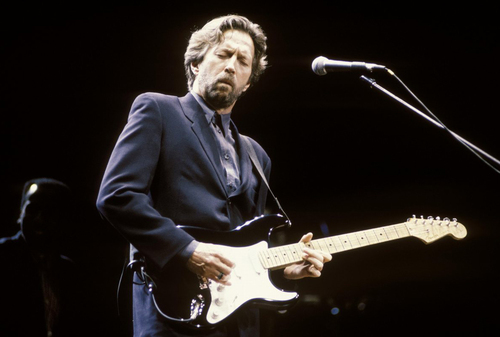 Made from parts of three Strats acquired in Nashville, Blackie is perhaps the most famous “personal guitar buddy icon,” and the most expensive.
Made from parts of three Strats acquired in Nashville, Blackie is perhaps the most famous “personal guitar buddy icon,” and the most expensive.
After Clapton retired it, it brought in $959,500 in 2004 at auction for his Crossroads Centre addiction treatment facility in Antigua – a world’s record price for an axe.
Clapton has referred to this guitar as being “part of him.” In his interview with Christie’s for its auction, his said: “It is such a personal thing – I almost made this guitar myself – from different components, and I’ve never done that before or since. The guitar I chose to use for my return to recording [was] a black Fender Stratocaster I had nicknamed ‘Blackie.’ In the early days, in spite of my admiration for both Buddy Holly and Buddy Guy, both Strat players, I had predominantly played a Gibson Les Paul.
“But one day while on tour with the Dominos, I saw Steve Winwood with a white Strat, and inspired by him, I went into Sho-Bud in Nashville, and they had a stack of Strats in the back of the shop. They were completely out of fashion at the time and I bought six of them for a song, no more than about a hundred dollars each. When I got home, I gave one to Steve, one to Pete Townshend and another to George Harrison and kept the rest. I then took the other three and made one guitar out of them, using the best components of each. With pickups from one, scratchplate from another, and the neck from another.”
Blackie was practically his sole stage and studio guitar from late 1970 to 1985. Blackie ventured out of retirement on two occasions while still owned by Clapton. The first was for a television commercial for Honda Cars Japan in 1990 at the company’s request. Eric was filmed overdubbing some new licks onto his track, “Bad Love” (from the 1989 album, Journeyman). The second instance was for one number at the Royal Albert Hall in 1991.
In 2001, Lee Dickson, Eric Clapton’s guitar technician from 1978-2008, said, “Blackie is still around and 100 percent playable, contrary to all rumors otherwise. We tossed around the idea to have a new neck made for it, but eventually the decision was made to just retire Blackie.”
In addition to being heard on numerous recordings, Blackie graced several Clapton album covers including Slowhand, Just One Night and The Cream of Eric Clapton.
Watch a video of E.C. with Blackie
3) Keith Richards’ 1953 Fender Telecaster “Micawber”
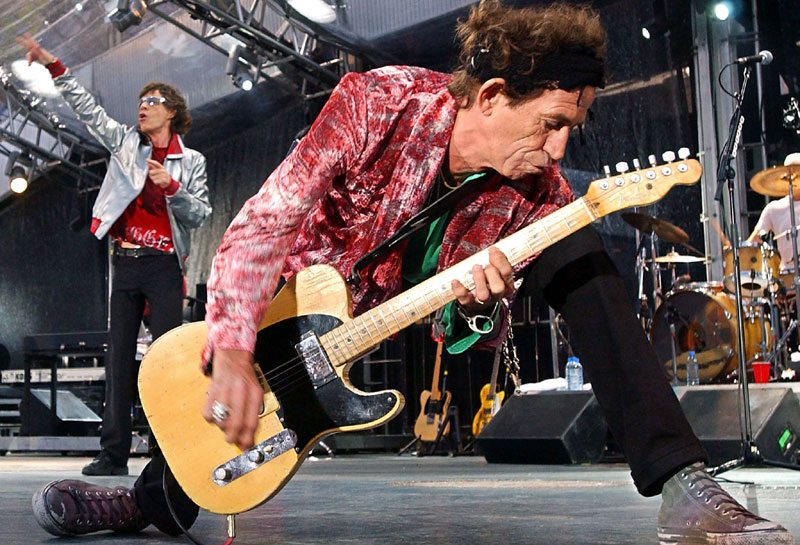 The Rolling Stone’s best-known guitar is probably “Micawber,” an early ’50s butterscotch Fender Telecaster Blonde tuned to open G, with the sixth string removed. The guitar is named for a character in Charles Dickens’ David Copperfield.
The Rolling Stone’s best-known guitar is probably “Micawber,” an early ’50s butterscotch Fender Telecaster Blonde tuned to open G, with the sixth string removed. The guitar is named for a character in Charles Dickens’ David Copperfield.
But for this musician, the technical details of the guitar are far less important than the sound of the thing. The prospect of talking to a reporter for a guitar magazine about what kind of strings he uses is not high on Keef’s bucket list. For that matter, neither is the topic of who is the world’s greatest guitar player. While he has mellowed with age and become more polite to interviewers, if you are a budding rock journo prepping for your interview with him, it would be wise to keep this in mind.
For one thing, Keith’s guitar style has always been of the rhythm-player variety, elevating that position to the fore – and more in tune with an instrument like a Telecaster, as opposed to the flashier Stratocaster preferred by the gods of soaring lead lines. Which lets him out of the Top 10 lead guitarist polls right off the bat. Then there is his general disdain for pissing contests and popularity polls, preferring to be the humble craftsman and team player that he is. Case in point, his response to Guitar World‘s query in the March 1986 issue: “If I’m a guitar hero, I never really entered the competition – I forgot to fill in the application form.”
He went on to elaborate on being a guitar hero without taking 14-minute solos: “I’ve never thought of myself as being in that league, that fastest-gun-in-the-west sort of thing. I’ve always seen what I do as oiling the machinery for the Stones, acting as a catalyst, or bashing out something against what one of the other guys in the band is doing.”
Also identified with….
• Roy Buchanan’s 1953 Fender Telecaster Serial #2324 (named Nancy)
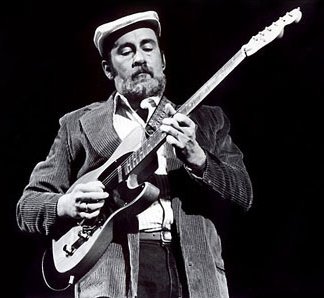 I have become something of an authority on Roy, having done the last living interview with him. This is what I know:
I have become something of an authority on Roy, having done the last living interview with him. This is what I know:
Roy Buchanan, the Master of the Telecaster, left the planet on August 14, 1988 under shady circumstances. Why is it so often the case with these guitar heroes? (I’m thinking about the controversy surrounding Jimi Hendrix’s supposed exit via a drug-related incident, which has not been proven.) In Roy’s story, the native Arkansan was picked up by police in Fairfax, VA, for public intoxication. Shortly after being arrested and placed in a holding cell, a routine check on Buchanan revealed he had hung himself. Well, that was the “official” story. Roy’s widow maintains that evidence like a three-foot-high window from which he could not have possibly achieved that maneuver and other details point to a cover-up of police malfeasance.
More interesting with regard to Roy’s Telecaster genius is his influence and achievements. While he is the The Best Unknown Guitarist in the World, the title of a 1971 PBS documentary about him, he mentored such greats as Robbie Robertson (his understudy in Ronnie Hawkins & The Hawks, no less), Jeff Beck and Billy Gibbons. Ranked #57 on Rolling Stone’s “100 Greatest Guitarists of All Time” and one of Guitar Player’s “50 Greatest Tones of All Time,“ Buchanan himself was taught by bandleader Johnny Otis (father of Shuggie), Jimmy Nolen (later with James Brown), Pete Lewis and Johnny “Guitar” Watson.
The other side of Roy’s fabulous unfabulosity was his aw-shucks manner and no-frills craftsmanship. When he was offered a gig with the Stones, he turned them down because he didn’t think he fit the mold of a prancing rock cockatoo (his words, not mine). What comes around goes around: When I interviewed Martin Scorsese about his use of Roy’s “Sweet Dreams” on the soundtrack of The Departed, he told me it was Robbie Robertson, Roy’s protégé and Marty’s right-hand music director on his films, who suggested it!
For more info on my exclusive interview and master class DVD Roy Buchanan Telly Talk, go here:
2) Jimmy Page’s “Number One” Gibson Les Paul
 Jimmy Page is known to most people as a player of Les Pauls, and his Les Paul of choice, this 1959 or ’60 Les Paul Standard Sunburst, “Number One” as he refers to it, is one of the most iconic guitars in rock ‘n’ roll. Jimmy has described the guitar as both his mistress and his wife… except it doesn’t ask for alimony! In the book Million Dollar Les Paul, Gibson Historic Program Manager Edwin Wilson described the experience of handling Jimmy’s guitar:
Jimmy Page is known to most people as a player of Les Pauls, and his Les Paul of choice, this 1959 or ’60 Les Paul Standard Sunburst, “Number One” as he refers to it, is one of the most iconic guitars in rock ‘n’ roll. Jimmy has described the guitar as both his mistress and his wife… except it doesn’t ask for alimony! In the book Million Dollar Les Paul, Gibson Historic Program Manager Edwin Wilson described the experience of handling Jimmy’s guitar:
“Okay, I need to get started. Shall I wear gloves?” Wilson asked Page.
“No, that’s okay, take it apart. Do whatever you want to do,” Jimmy responded.
Wilson was stunned by his response and later reflected, “I realized that one of the things that makes his guitar the coolest Les Paul ever is that he knows very well what that guitar is. He knows that it’s a tool for him. It’s not something he hangs up on a wall. And that made it very easy to go through the guitar and do my thing.”
Page bought this guitar from Joe Walsh of the James Gang in April of 1969 while he was in San Francisco on a tour of America. Jimmy recalled the transaction in 2004: “Joe brought it for me when we played the Fillmore. He insisted I buy it, and he was right.”
In the May 2012 issue of Guitar World, Walsh told his story of the transaction: “Jimmy was still playing the Telecasters that he played in the Yardbirds. He was looking for a Les Paul and asked if I knew of any, ’cause he couldn’t find one that he liked. And I have two. So I kept the one I liked the most and I flew… with the other one. I laid it on him and said, ‘Try this out.’ He really liked it. So I gave him a really good deal, about 1,200 bucks. I had to hand-carry it; I flew there and everything. So whatever my expenses were, that’s what I charged him. But again, I just thought he should have a Les Paul for godsakes!”
1) Jimi Hendrix’s “Woodstock” Fender Stratocaster
The white 1968 Stratocaster (serial number 24098) in an Olympic white paint job that Jimi Hendrix played at the Woodstock Music and Arts Festival in 1969 is The One.
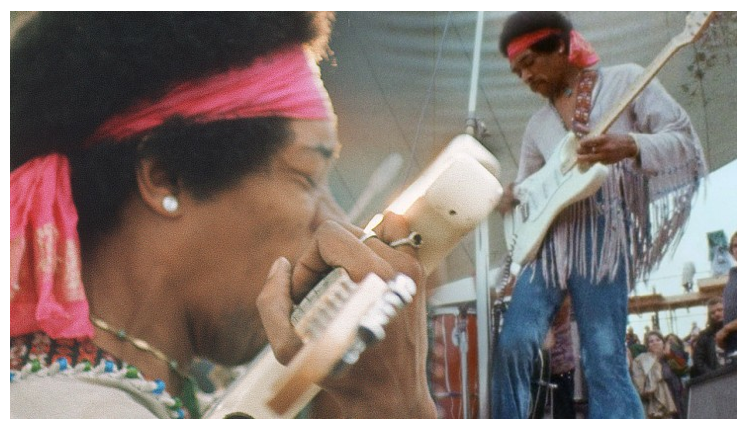 While others might tout the hand-painted Strat that Jimi played, or the black Fender Stratocaster he later torched on stage in 1967 during “Wild Thing” at the Monterey International Pop Festival, the “Woodstock Strat” is Numero Uno, as far as this writer is concerned.
While others might tout the hand-painted Strat that Jimi played, or the black Fender Stratocaster he later torched on stage in 1967 during “Wild Thing” at the Monterey International Pop Festival, the “Woodstock Strat” is Numero Uno, as far as this writer is concerned.
According to Mitch Mitchell, Jimi’s drummer, Hendrix purchased this guitar from Manny’s Music in New York City in 1968. The guitar itself was a hybrid: the body of the guitar was made from alder wood, while the neck was made of maple; the fretboard was also maple but was a separate piece of wood. Being a left-handed player, Jimi was forced to flip this guitar upside-down and reverse the nut at the top in order to string and play it properly. Hendrix would continue to play his beloved white Stratocaster well after Woodstock, including at his final live performance at the Isle of Fehmarn in September of 1970.
Mitchell’s loyalty would be repaid by the ever-honorable Jimi. Shortly after the Fehmarn show, Jimi bequeathed the instrument to his faithful drummer. “I had given him a drum kit as a present some time before and I said to him, ‘I’ll have that guitar before you break it up’ (I do not think that he would in fact have broken this particular guitar). He said, as was his way, ‘You got it,’ and he then gave me the guitar.”
Unknown to most, Mitch Mitchell held onto the guitar for many years after Jimi had passed away until he finally decided to part ways with it at an auction held by Sotheby’s in 1990. The guitar was sold to Gabriele Ansaloni for the astronomical sum of £198,000. Ansaloni held onto the guitar for two years until finally deciding to sell it to Microsoft co-founder Paul Allen for an undisclosed sum (rumors are it was somewhere in the neighborhood of $2,000,000 or more). Allen, a Hendrix freak, of course decided to house it in the Experience Music Project in Seattle, WA, the museum he founded in 2001 in order to highlight the history of Jimi Hendrix as well as rock ‘n’ roll in general.
Click here for Part 2!
- 10 Great Rock Driving Songs - 08/28/2025
- 10 Great Eric Clapton Collaborations - 03/29/2025
- 11 Movies That Rock: Woodstock to Spinal Tap - 03/01/2025

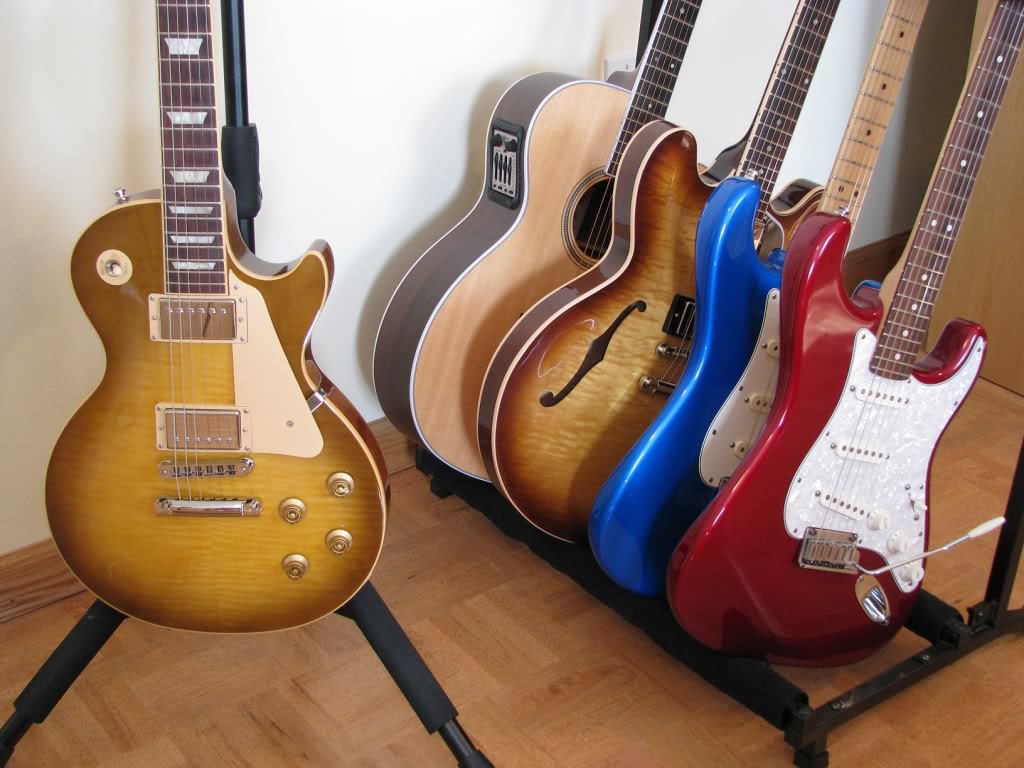


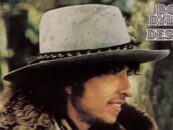


14 Comments so far
Jump into a conversationI’ve read a lot of articles about Guitar Players and am pleased to communicate with someone so knowledgeable in the field/genre. I have heard many, many, many (all?) the great players. I am nearly 70, have been a blues, jazz and rock fan for 60 years. I have never seen, heard, OR HEARD OF a guitar player of the caliber/skill of TOMMY EMMANUEL. Yes, despite ROLLING STONE and GUITAR PLAYER having published list after list after list after list of GUITAR GREATS….TOMMY EMMANUEL’S name rarely, if ever, shows up on any list. Some pretty fair players are on this list of the great instruments….good reading….fun. Fact is that none of them, Jimi included, have command of the instrument to the degree that TOMMY does. I’m tired of hearing how great so-and-so plays….No matter who your own favorite so-and-so may be….he MIGHT be able to play rhythm for TOMMY….maybe not.
I agree Tommy Emmanuel is the best guitarist on planet Earth!
Key point about the Compressor on McGuinn’s Rickenbacker, to produce some singing sustain, Actually, he said, he ran it through TWO compressors for extra tone,
His later Ricks were specially built will a sustain device inside the guitar itself,
A little surprised that the Searchers’ Mike Pender isn’t listed with the notable players of the Rickenbacker electric 12. Check out “Needles and Pins” and you hear something really close to the Byrds’ sound a year before we heard the Byrds.
Mike Pender certainly deserves mention, however, there was no 12 string on their hit recording of Needles and Pins, just two 6 strings in an incredible synchronization.
I always liked how EC eventually settled on the Stratocaster, partially because I have two of my own. It reminds me of an old schoolmate who was a big Gibson mark, as well as a Clapton worshipper. He often declared that since EC was the “best guitar player in the world”, whatever he played was obviously the “best guitar in the world”.
As I was much more into Hendrix, I happened to prefer the Stratocaster, not that I have anything against other brands (actually, my last couple of guitars have been Schecters). I always considered it to be a purely personal preference, but some people have different opinions about these things.
I was surprised that JP’s Les Paul was chosen over his double neck Gibson, which is a much less common instrument. Instead I would have chosen Dwayne Allman for a great example of a Les Paul player…
Yeah, when it comes to “iconic” and Jimmy Page, that doubleneck comes to mind first… Les Paul associated with Duane Allman makes much sense, too.
Great article Noe. I’m a big fan of all those guys including Roy. I met him at The Roxy many moons ago. I too, thought something was shady about the way he was taken from us. Bernard
RB plays the blues track “Sweet Dreams” at the end of “The Departed”, and I have to wonder if he’s playing it the way he does because it’s a style he consciously cultivates, or if he’s under the influence of something that makes him really sloppy.
I saw him once on public television around 1970 and was impressed. I recall how he used the tone knob to get a wah effect. So I was quite surprised to find out that he was playing on the soundtrack. In any event, Marty Scorsese liked it enough to use it, so I may be in the minority in this situation…
Peter Green, Ronson, Kossoff.
Didn’t Duane Allman play an SG, as well as Cippolina? I suppose the years have pushed both, certainly the latter, out of “iconic” status.
What did Steve Howe play, a 330 or 335? But I guess he’s played so many different guitars over the years.
Duane Allman played a lot of Les Paul and there are some iconic pics of him with a Les Paul. He also used an SG. But there is NO DOUBT he is still iconic and time has NOT made him fade from that status!! Regarding iconic Les Paul users, you could also mention Gary Rossington (Lynyrd Skynyrd), who used it very often, influenced by Paul Kossoff of Free.. (he used the SG only for his slide stuff on Freebird, I’d say..).
I would add the Flying V and two of the great masters who played them: Lonnie Mack and Dave Davies.
You know who was even better than Tommy Emmanuel? His late brother, Phil Emmanuel. When the two of them played together, Tommy always played rhythm guitar for Phil. That’s how good Phil was. Find some Youtube videos of the two playing music together and you’ll see. They’re both astounding players, and Tommy is amazing, but Phil was wonderful in his own right.
Jerry Garcia’s Tiger? Probably heard live by more people than any guitar in history.